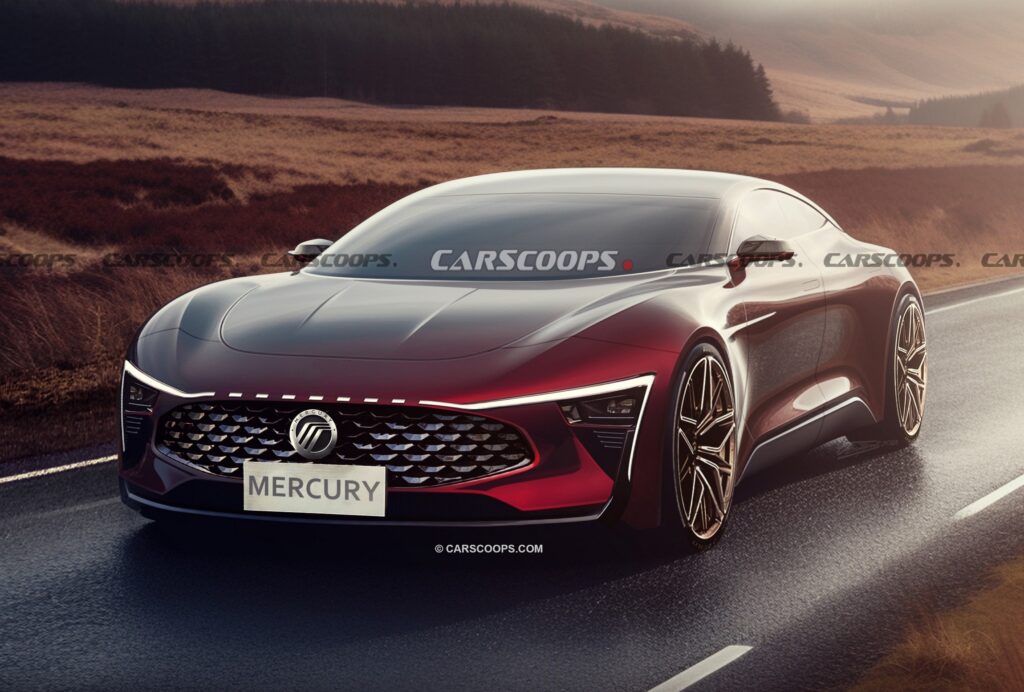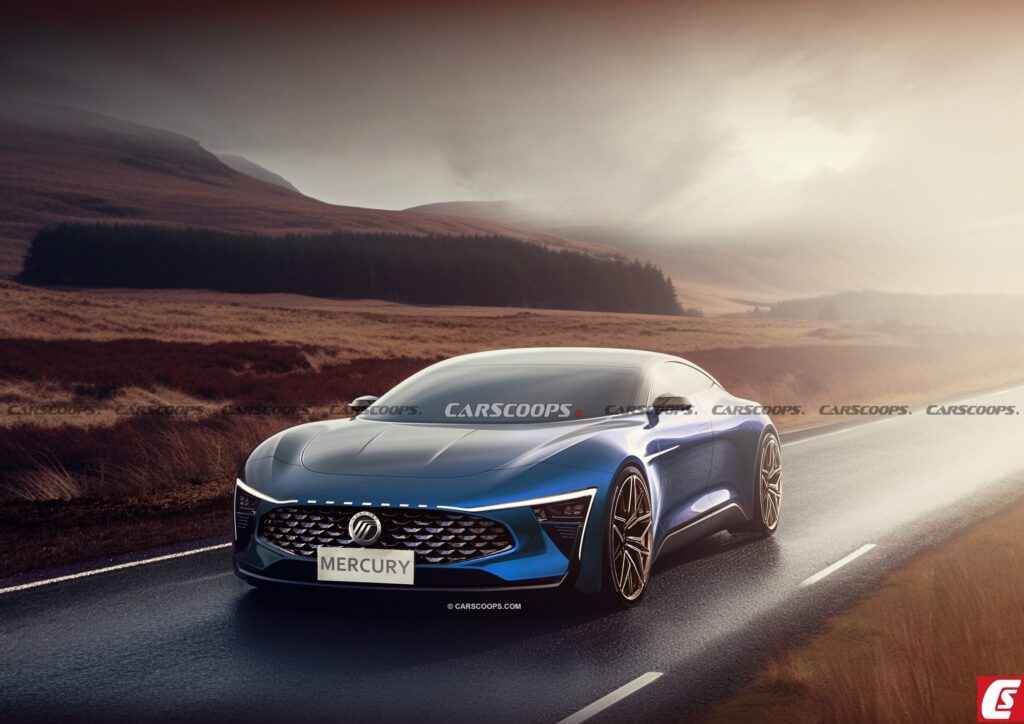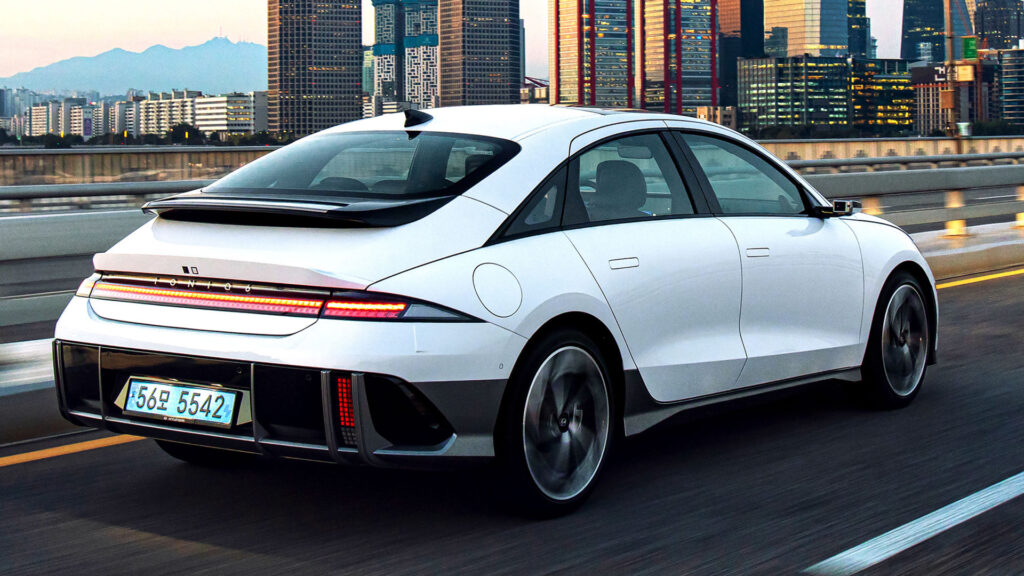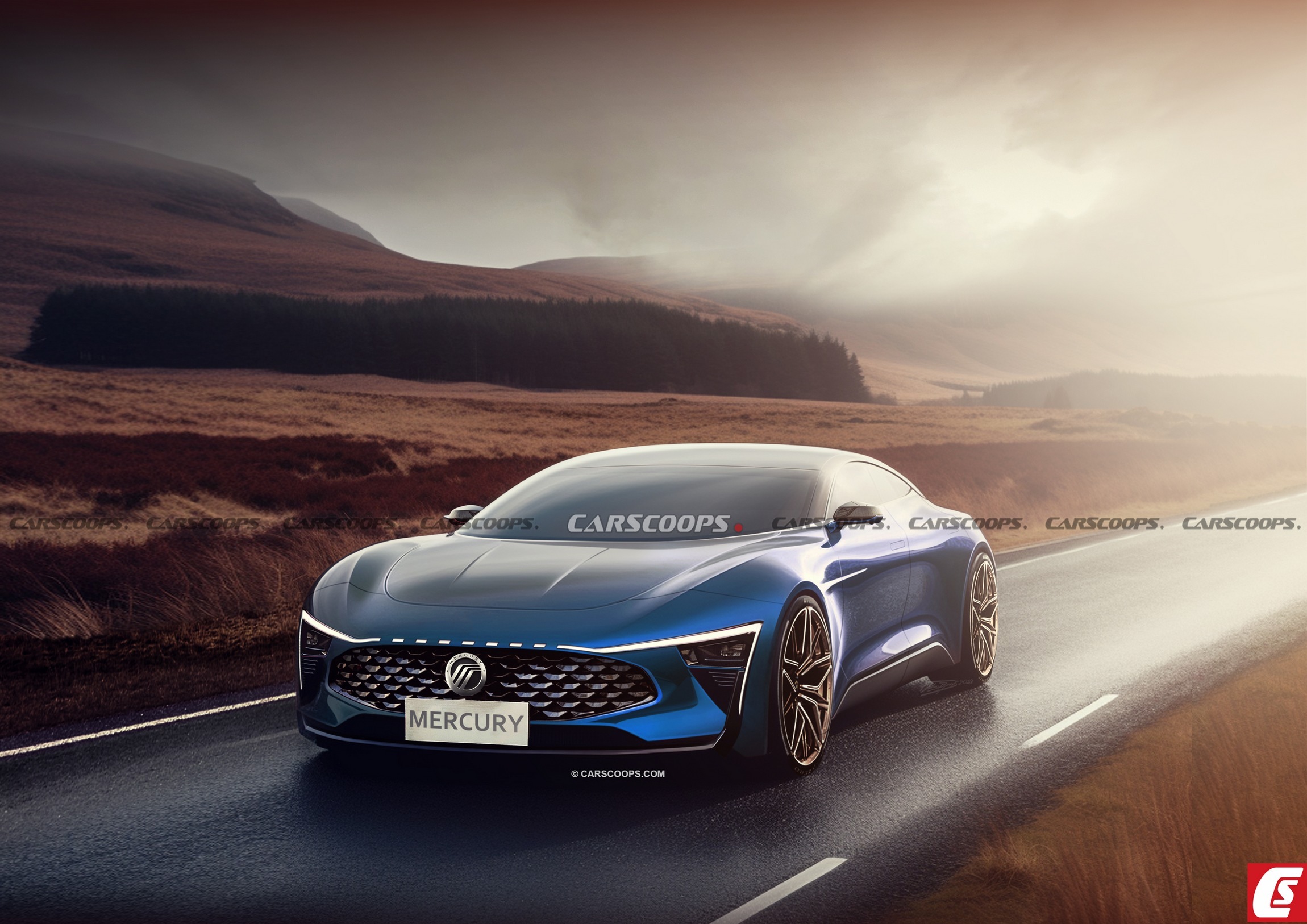This story’s independent illustrations are not affiliated in any way with Ford or Mercury.
Remember Mercury? Once a prominent name in the early automotive years, it took a backseat in importance as Ford let the brand fade into the afterlife as merely a gussied-up trim alternative to its blue oval donor models.
The axe fell on the brand in 2011, and whilst Dearborn has no plans to revive it, we wonder what it could look like today as an all-electric lineup to battle against Polestar and Volkswagen’s ID models. After all, with Ford’s Model e division and the creation of the innovative BlueOval City mega campus, Mercury has the perfect opportunity to make a grand reentry into the automotive market.
More: Mystery Sporty Ford Or Lincoln Model Spotted At Dearborn Development Center
So, what could a future Mercury look like, and how would it differ from its Ford-supplied architecture? Let’s illustratively explore further.
Distinctive Design

Mercury’s styling must be substantially different to avoid past failures to differentiate itself from Ford’s existing lineup. The brand should embody an aura of elegance and sophistication, setting it apart from the mainstream aesthetic of other electric vehicles.
As depicted in our design study, we’d expect to see a combination of sleek lines, sculpted surfaces, and bold, distinctive elements that reflect Mercury’s heritage while embracing a futuristic appeal. Key aspects include a large faux grille panel, frameless windows and segmented front-end DRLs that invoke memories of the 49 Coupe’s grille and the lightbar that graced many Mercurys of the early 1990s.
A Premium Outlook
Positioned between Ford and Lincoln, a Mercury revival would focus on interior quality and cutting-edge technologies within its vehicles. Think Mazda or Buick regarding unique cabin styling and content, such as augmented reality displays and advanced, AI-based voice control, to deliver a truly immersive and user-friendly driving experience.
One would expect Level 3 semi-autonomous driving, which enables hands-off driving in certain highway conditions. This system would be based on an advanced version of Ford’s BlueCruise, making Mercury vehicles ideal for long-distance travel or urban motorway commuting.
Under The Skin

Mercury could leverage Ford’s GE2 next-generation platform, scheduled for release in 2025, to underpin its electric vehicles. This modular platform is an evolution of Mustang Mach-E’s architecture. It will offer a solid foundation for Mercury’s electric lineup, providing flexibility for various vehicle types and accommodating different battery sizes.
More: Lincoln’s Model L100 Ultra-Luxurious Concept EV Is A Visitor From The Future
Dual-motor, all-wheel-drive electric powertrains with substantial power and torque capabilities (a minimum of 300 hp / 220 kW) would help Mercury’s positioning above Ford. Furthermore, the potential utilization of solid-state batteries, benefiting from Ford’s investment in Solid Power, could revolutionize the brand’s electric range.
Solid-state batteries offer higher energy density, faster charging times, and improved safety, making them a potential game-changer. Moreover, Mercury could tap into the Tesla Supercharger network through Ford’s agreement with Tesla, providing its customers with reliable access to widespread charging infrastructure.
An Electrified Landscape

In a competitive electric sedan segment, this Mercury study would face formidable rivals such as Tesla’s Model 3, Hyundai Ioniq 6, Kia EV6, and Volkswagen ID.7. Yet there are potentially many more on the horizon from China, with offerings like BYD’s Han, Nio ET5, and the Zhiji/IM L7 from SAIC Motors.
Final thoughts? The revival of Mercury as a stand-alone, all-electric car brand with various models would be an exciting prospect for Ford. However, should Mercury be revived at all? We’d love to hear your views in the comments below.















